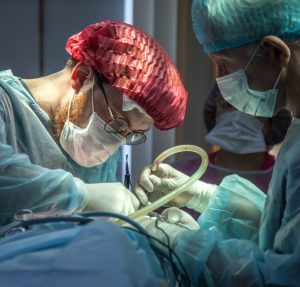16 Nov Treatment Plan
Cleft lip and palate treatment is carried out by the Cleft Teams. These are teams of cleft specialists, including plastic surgeons, nurses, psychologists, dentists and more, who are all dedicated to caring for people with cleft lip and/or palate.
There is a 20-year treatment plan in place, but every individual patient is different and most will not need all the services offered.
Surgery

Babies born with a cleft will need repair surgery to close the gap left by the tissue not coming together in the womb. Usually, a cleft lip will be repaired at 3-6 months, while a cleft palate will be repaired at 6-12 months.
One or more follow-up procedures may be needed once the lip and/or palate repairs have healed.
Additional surgery to help with speech may sometimes be necessary for those with a cleft palate.
Children with a cleft that involves their gum may need an Alveolar Bone Graft procedure when they are 7-12 years old to make sure their adult teeth come through properly.
As they get older, teenagers and adults with a cleft may choose to have more surgery once their face has stopped growing. These can include:
Rhinoplasty to change the shape and/or function of the nose
Lip revision surgery to change the shape of the lip after a cleft repair
Osteotomy (or ‘orthognathic’ surgery), which is where the jaws are realigned to change the appearance of the profile as well as how the teeth fit together
Restorative dental surgery, such as implants or veneers, to improve the appearance of missing or misshapen teeth
Speech
Your soft palate (the bit towards the back of the throat) is part of the mechanism that blocks off your mouth from your nose while you talk. A cleft palate can make speech sound nasal or make certain sounds unclear, especially consonants like t, b and d.
Around half of children with a cleft palate will need some form of Speech and Language Therapy to help them speak clearly. This can be also available to adults with speech issues.
The goal is for children to have clear, intelligible (understandable) speech by the age of 5 so they can start school with confidence.
Hearing
Many children with a cleft palate will have issues with their hearing, more specifically ‘glue ear‘. This usually clears up by the time they are 6-8 years old, but will affect children in different ways as they grow up, and some children will have long-term issues.
It can be treated using grommets or hearing aids.
Dental & Orthodontic Care
People born with a cleft can have a higher risk of tooth decay due to the placement or shape of some of their teeth. They may need extra attention from a dentist to keep their teeth and gums strong and healthy. Parents need to take extra care to maintain good dental health in children.
If the cleft involves their gum, children will probably need some kind of orthodontic treatment which usually includes wearing braces or a retainer.
Psychological Services
Clinical Psychologists work in or with many Cleft Teams to support individuals and families affected by cleft lip and palate. They are available from diagnosis right through until adulthood. Through meeting with families and individuals they try to find out if more support is needed.
Some of the reasons you might see a Clinical Psychologist from your Cleft Team include:
Talking to someone about worries you have about your or your child’s treatment
Help making decisions about treatment
Extra support during times of change, like starting school or moving into secondary school
You and/or your family have trouble talking about or coming to terms with a cleft lip and/or palate
Problems with bullying or teasing
Building confidence and self-esteem
Coping with things that can’t be changed or ‘fixed’ with surgery
Help to come up with coping strategies for things like staring or comments
Clinical Psychologists with Cleft Teams are specialists who understand the specific issues which can face people affected by cleft lip and/or palate.

